Every school has a remarkable story to tell—a rich tapestry woven from decades of student achievements, championship victories, distinguished alumni, dedicated educators, and transformative moments that define institutional identity. Yet many educational institutions struggle to preserve and share this invaluable heritage effectively. Traditional approaches to honoring school history often fall short, with dusty trophy cases hidden in back hallways, faded plaques with outdated information, and precious memories locked away in forgotten archives.
The way schools recognize and preserve their history directly impacts school pride, community engagement, and institutional identity. When students, alumni, and community members can easily access and engage with their school’s rich heritage, something powerful happens—connections deepen, pride strengthens, and inspiration flows from past achievements to future aspirations.
The School History Challenge:
Many schools face common obstacles in preserving their legacy:
- Limited physical space constraining how much history can be displayed
- Outdated displays that fail to engage modern audiences
- Inaccessible archives preventing broad community engagement
- Static recognition that can’t grow with new achievements
- Disconnected systems separating athletic, academic, and alumni recognition
- Maintenance challenges requiring constant physical updates
Modern digital recognition solutions address these challenges while transforming how schools honor history and build pride.
Why Preserving School History Matters More Than Ever
Understanding why historical preservation deserves institutional attention and investment reveals its profound impact across multiple dimensions of school culture and community.
Building Authentic School Pride Through Heritage
School pride doesn’t emerge from superficial spirit activities alone—it grows from genuine connections to institutional identity, values, and shared history. When students understand the remarkable achievements of those who came before them, pride deepens from surface-level team allegiance to meaningful identification with institutional legacy.

Research consistently demonstrates that students with strong connections to school history exhibit higher engagement levels, improved academic performance, and greater participation in extracurricular activities. They see themselves as part of something larger—temporary stewards of ongoing institutional stories extending far beyond their individual experiences.
According to educational leadership studies, schools with intentional heritage preservation programs report significantly higher alumni engagement rates and stronger community support. When graduates feel their achievements might someday be recognized alongside distinguished alumni who came before them, their connection to the institution strengthens throughout their lives.
Inspiring Current Students Through Historical Examples
Abstract concepts like “excellence” and “achievement” become concrete and attainable when students see real examples from their own school’s history. A championship team from 1985, a valedictorian who became a Rhodes Scholar, or an alumnus who founded a successful business—these aren’t distant celebrities, they’re people who walked the same hallways, sat in the same classrooms, and faced similar challenges.
This proximity makes achievement feel accessible. Students think: “If someone from my school accomplished that, maybe I can too.” This psychological shift from seeing success as distant and unattainable to viewing it as a realistic possibility profoundly impacts student motivation and aspirations.
Best ways to highlight student accomplishments include creating visible connections between current students and historical achievers, demonstrating that today’s students are tomorrow’s distinguished alumni.
Strengthening Alumni Connections and Engagement
Alumni represent invaluable resources for current students—potential mentors, career connections, financial supporters, and living embodiments of educational value. Yet many graduates gradually drift away from their alma maters as years pass and connections fade.
Meaningful recognition of school history creates touchpoints keeping alumni engaged. When graduates see their achievements or those of their classmates honored publicly, they feel valued as integral parts of ongoing institutional narratives. This recognition transforms alumni from former students to lifelong community members invested in institutional success.
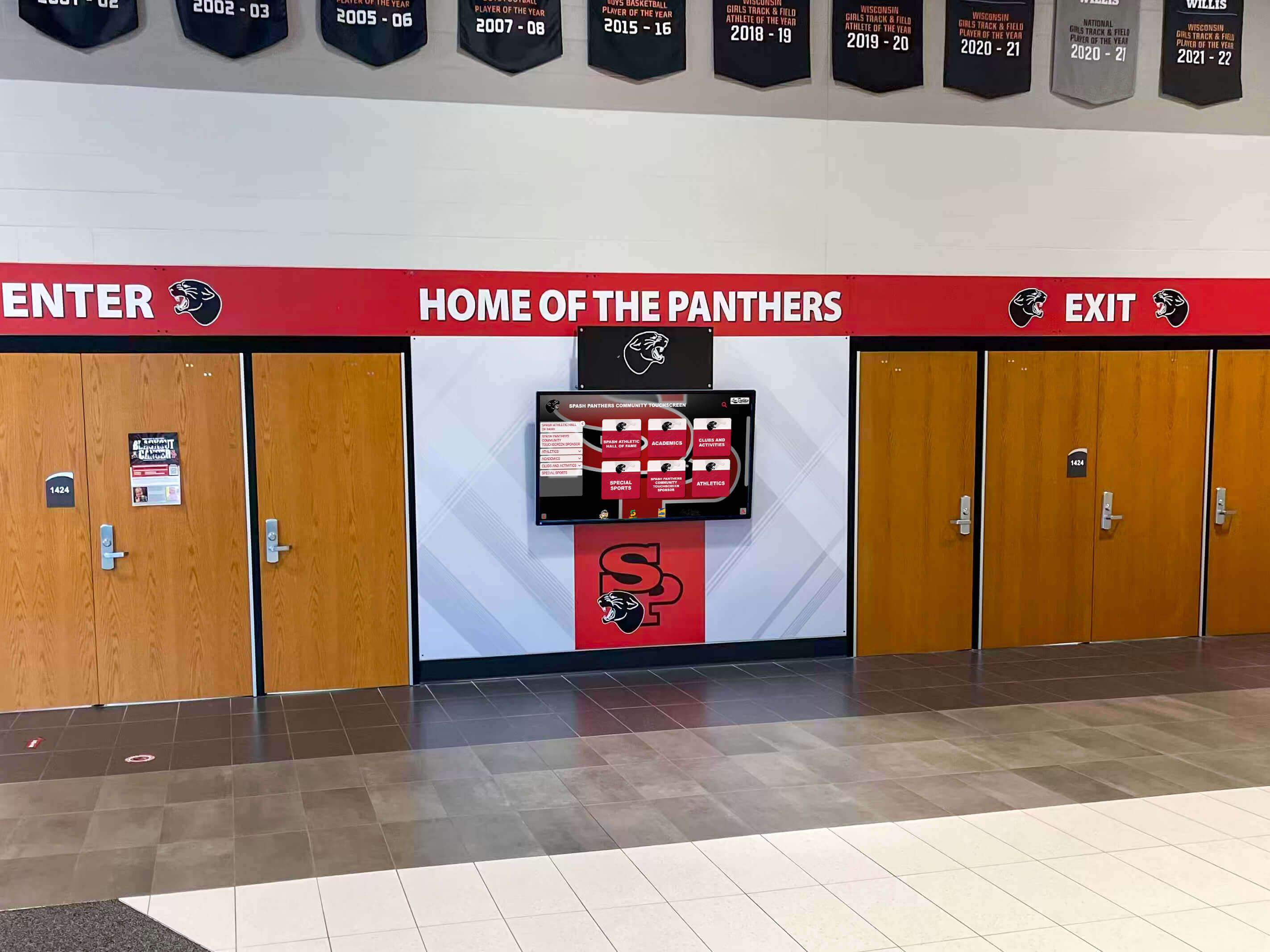
Schools implementing comprehensive recognition programs report that alumni engagement through interactive recognition displays increases giving rates, volunteer participation, and attendance at reunions and special events. Recognition communicates respect and gratitude, fostering reciprocal commitment from graduates.
Preserving Institutional Memory for Future Generations
Institutional memory naturally erodes over time. Long-serving faculty retire taking decades of knowledge with them. Alumni pass away leaving their stories untold. Physical artifacts deteriorate. Without intentional preservation efforts, precious heritage disappears forever.
Systematic historical preservation ensures that remarkable achievements, defining moments, and inspiring stories remain accessible to future generations. Decades from now, students and community members should still be able to explore their school’s evolution, understand founding values, and connect with the legacy they’re inheriting and extending.
The Limitations of Traditional School History Recognition
While traditional approaches to preserving school history have served institutions for generations, they face significant challenges in modern educational environments.
Space Constraints Limit Recognition Capacity
Physical trophy cases and plaque walls can only accommodate finite achievements. As years pass and new accomplishments accumulate, schools face difficult choices: remove older recognition to make space for recent achievements, expand physical displays at considerable expense, or simply stop recognizing new achievements when space fills.
This zero-sum limitation forces schools to prioritize certain types of recognition over others—typically favoring recent achievements over historical ones or athletic accomplishments over academic and artistic excellence. These forced choices create incomplete historical narratives and limit how comprehensively schools can honor their full heritage.
Static Displays Lack Engagement and Accessibility
Traditional plaques provide basic information—names, years, brief achievement descriptions—but can’t tell rich stories that bring history to life. Visitors walk past static displays without genuine engagement, unable to search for specific individuals, explore related content, or experience the multimedia storytelling that resonates with modern audiences.
Furthermore, physical displays are only accessible to those who can physically visit campus. Alumni living across the country or around the world, prospective families researching schools remotely, and community members with mobility limitations can’t engage with recognition that exists solely in physical hallways.
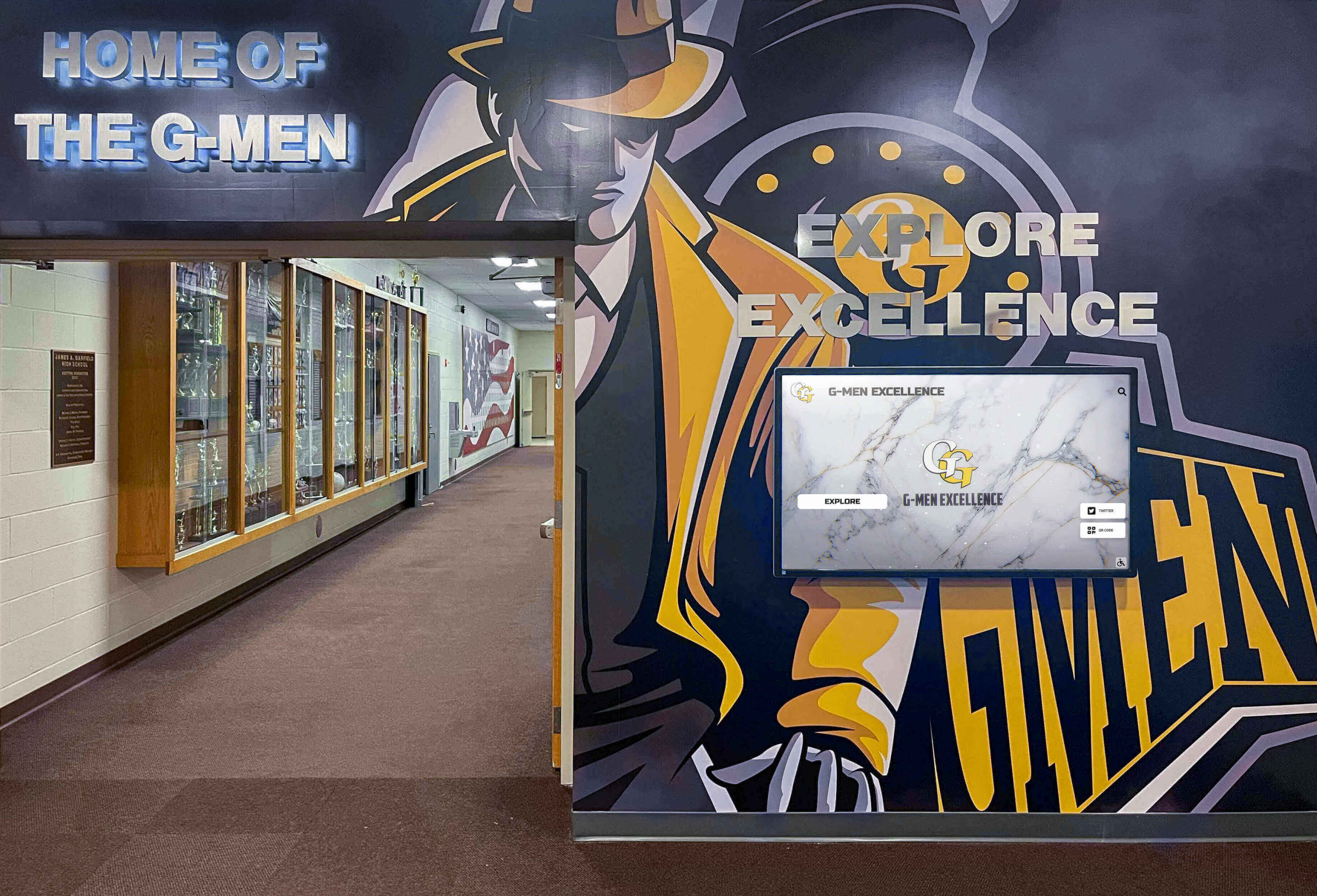
Maintenance and Update Challenges
Adding new recognition to physical displays requires manufacturing new plaques, scheduling installation, and ensuring aesthetic consistency with existing elements—processes that take months and cost hundreds or thousands of dollars per addition. Correcting errors or updating information proves equally cumbersome and expensive.
These practical obstacles often result in recognition programs that stagnate, with displays remaining unchanged for years because the effort and expense of updates feel prohibitive. Static programs lose relevance and fail to maintain community interest over time.
Disconnected Recognition Systems
Many schools maintain separate recognition systems for different achievement domains—athletic record boards in the gymnasium, academic honor rolls near administrative offices, alumni halls of fame in libraries, and arts recognition in performing arts centers. This fragmentation prevents comprehensive understanding of institutional history and makes it difficult for community members to explore achievements across multiple domains.
Students interested in both academics and athletics must visit multiple locations to explore relevant recognition. Alumni trying to find classmates or understand their graduation year’s collective achievements can’t access centralized information. Disconnected systems undermine the coherent institutional narrative that strong heritage preservation requires.
How Digital Recognition Transforms School History Preservation
Modern digital recognition platforms address traditional limitations while introducing powerful new capabilities that transform how schools preserve heritage and build pride.
Unlimited Capacity for Comprehensive Recognition
Digital systems eliminate physical space constraints that limit traditional displays. Whether recognizing 100 distinguished alumni or 10,000, 50 championship teams or 500, the display footprint remains constant while content capacity expands infinitely.
This unlimited capacity enables schools to honor comprehensive institutional history without forced choices about what to include or exclude. Every championship team, every valedictorian, every distinguished alumnus, every record-breaking athlete—all can receive appropriate recognition within systems designed to scale seamlessly.
Digital record boards for high schools provide excellent examples of how unlimited digital capacity enables comprehensive historical documentation impossible with physical displays alone.
Rich Multimedia Storytelling
Digital platforms transcend text-based recognition by incorporating photos, videos, audio recordings, scanned documents, and interactive timelines that bring history to life with emotional resonance impossible through static plaques.
Video interviews with distinguished alumni sharing career journeys and offering advice to current students create powerful connections across generations. Game footage from championship seasons preserves exciting moments while demonstrating athletic excellence. Photo galleries showing campus evolution across decades illustrate institutional growth and transformation. Audio recordings of historic performances or speeches preserve cultural artifacts that would otherwise be lost.
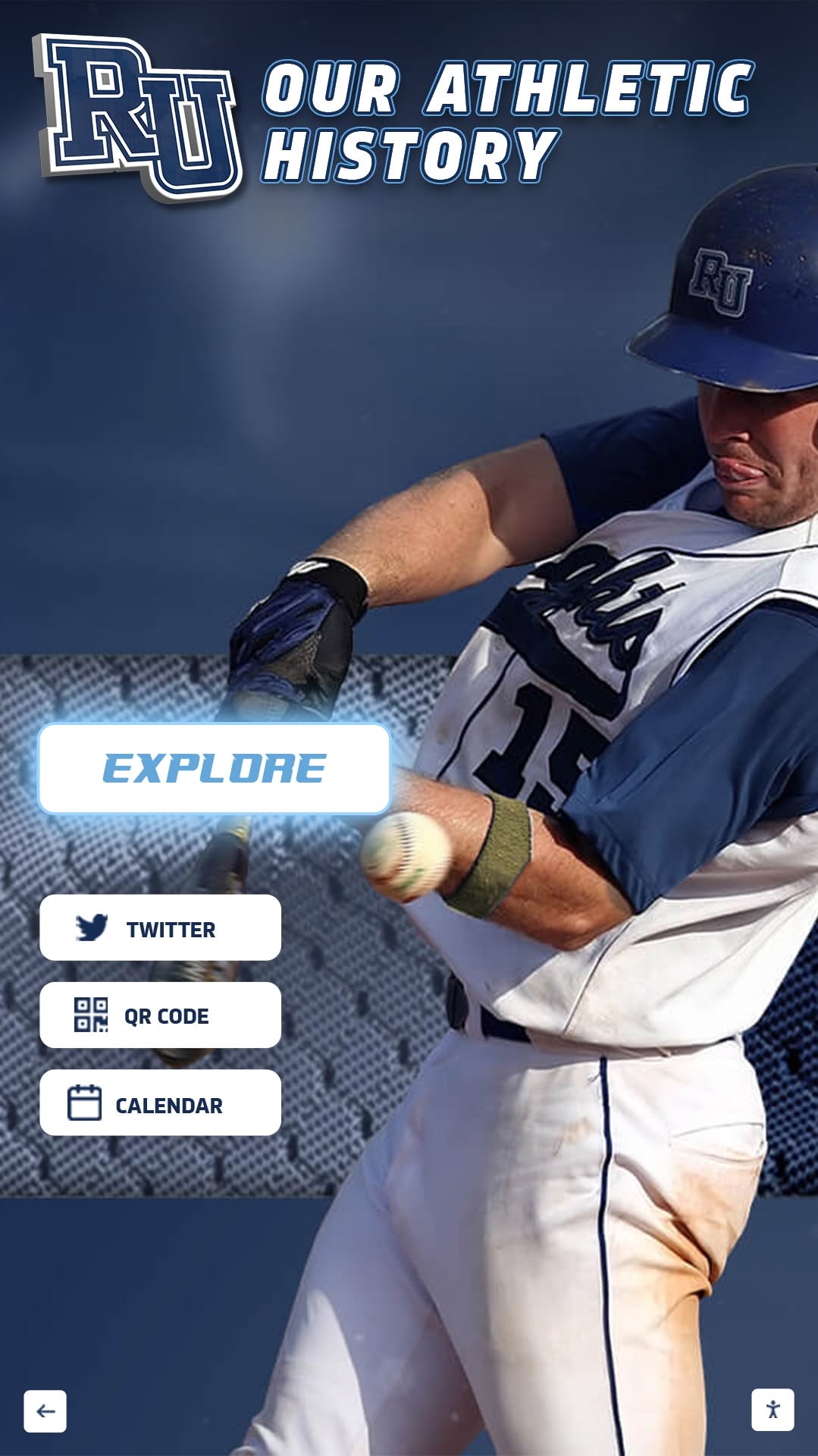
This multimedia richness transforms passive viewing into engaging experiences that hold attention, create emotional connections, and make history feel relevant and immediate rather than distant and abstract.
Powerful Search and Discovery Features
Interactive digital systems allow visitors to explore school history through intuitive search and filter capabilities. Students can quickly find alumni who pursued careers that interest them, search for relatives who attended decades earlier, filter championship teams by sport or year, or explore achievements from their graduation class.
This personalized discovery transforms recognition displays from static monuments into research tools and exploration platforms. Visitors engage actively rather than passively, creating meaningful personal connections to content that resonates with their specific interests and backgrounds.
Instant Updates and Corrections
Cloud-based content management systems enable administrators to add new recognition, update information, correct errors, and enhance existing content remotely without requiring technical expertise or physical access to displays. Updates appear instantly across all platforms—on-campus touchscreens, website displays, and mobile applications.
This ease of updating ensures recognition programs remain current and accurate with minimal ongoing maintenance burden. Schools can add new achievements as they occur, maintaining relevance and demonstrating that recognition programs actively celebrate contemporary success alongside historical heritage.
Centralized Multi-Domain Recognition
Digital platforms enable comprehensive recognition across all achievement domains—academics, athletics, arts, community service, distinguished alumni, and more—within unified systems. Visitors can explore school history holistically rather than encountering fragmented recognition in disconnected physical locations.
School achievement recognition programs benefit tremendously from centralized platforms that honor diverse excellence types while maintaining cohesive institutional narratives about values, achievements, and community.
Global Accessibility
Web-based components of digital recognition systems provide universal access regardless of physical location. Alumni anywhere in the world can explore their school’s heritage, find classmates, and stay connected to institutional history. Prospective families can research school culture and achievement before visiting campus. Community members can engage with school history without needing to physically enter buildings.
This accessibility exponentially expands who can engage with school history while enabling social sharing that extends institutional visibility far beyond traditional geographic limitations.
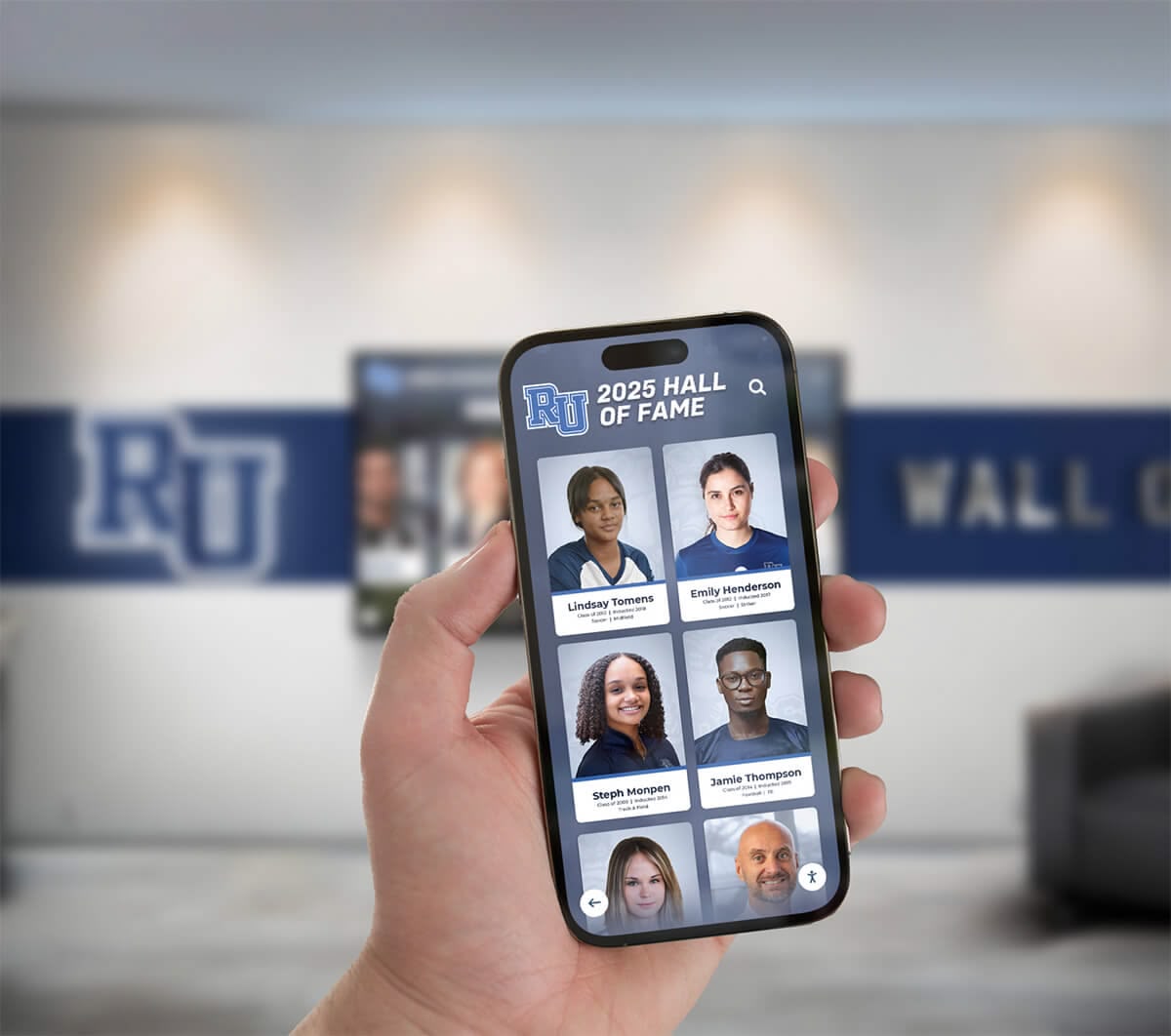
Rocket Alumni Solutions: Purpose-Built for School History Recognition
Understanding the specific needs of educational institutions, Rocket Alumni Solutions has developed comprehensive platforms that make preserving school history and building pride accessible for schools of all sizes and technical capabilities.
Intuitive Content Management
Rocket Alumni Solutions provides user-friendly content management systems that allow non-technical staff to add new content, update existing information, organize multimedia files, and maintain recognition programs independently without requiring ongoing technical support or specialized expertise.
Cloud-based platforms enable remote content management from any location, streamlining workflows and reducing administrative burden. Staff can work on content development during convenient times without needing physical access to display hardware.
Comprehensive Recognition Categories
The platform supports recognition across all achievement domains schools want to celebrate:
- Athletic excellence: Championship teams, individual records, all-conference honors, coaching legends
- Academic achievement: Valedictorians, scholarship recipients, academic competition successes, distinguished teachers
- Distinguished alumni: Career accomplishments, community service, professional recognition
- Arts and activities: Performance excellence, competition results, creative achievements
- Historical milestones: Founding history, facility evolution, significant institutional moments
- Community honors: Local partnerships, service projects, civic engagement
This comprehensive approach ensures schools can preserve complete institutional narratives rather than limiting recognition to narrow achievement categories.
Professional Design and Branding
Rocket Alumni Solutions creates custom-designed interfaces incorporating school colors, logos, mascots, and visual identities. Professional design ensures recognition displays feel authentically connected to institutional brands while maintaining aesthetic appeal that reflects well on honored individuals and the school itself.
Custom designed hall of fame solutions demonstrate how thoughtful design enhances recognition impact while creating displays that integrate seamlessly into campus environments.
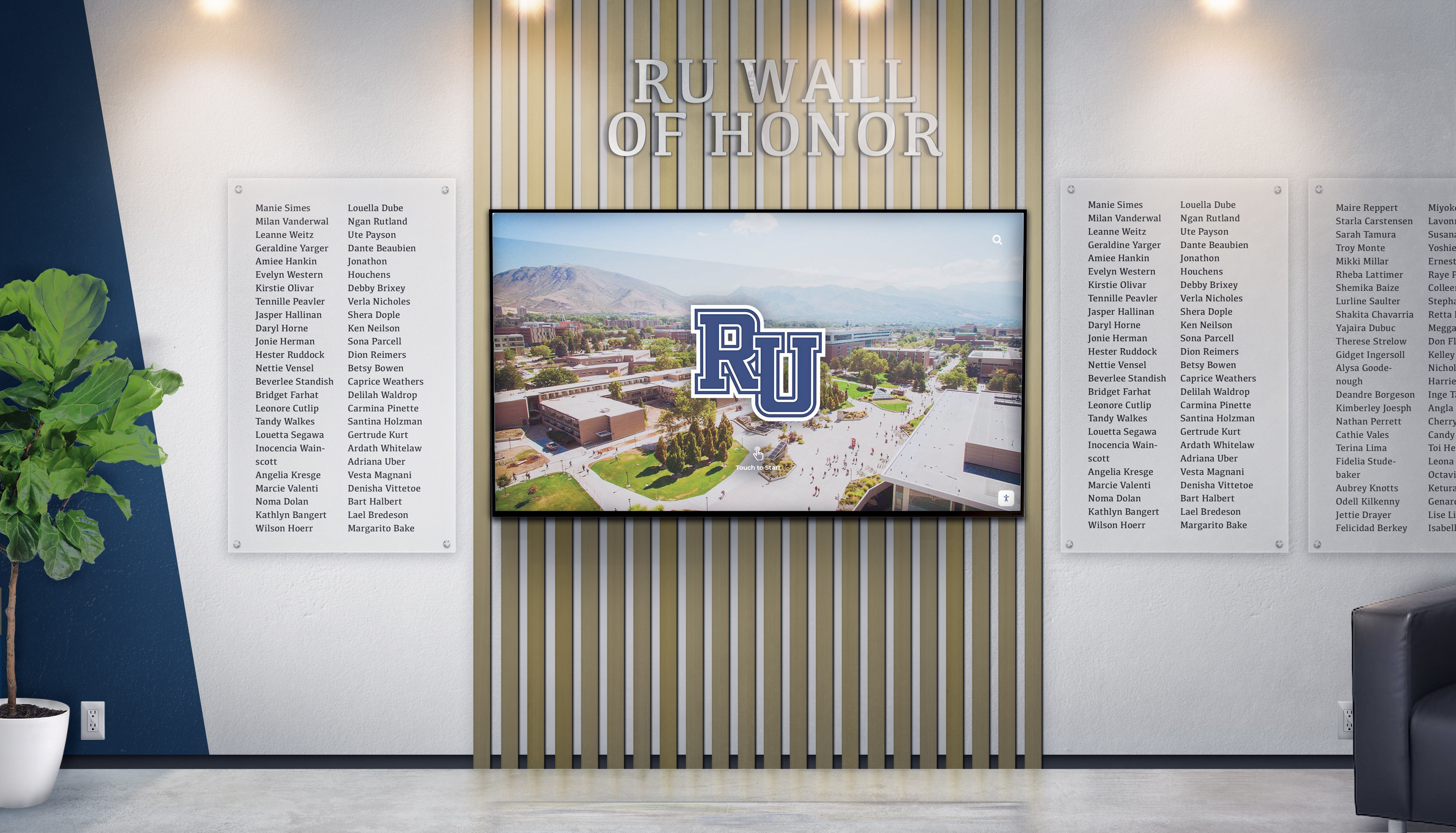
Flexible Display Options
The platform supports multiple display formats addressing diverse institutional needs:
- On-campus touchscreen kiosks: High-traffic locations enabling interactive exploration by students, visitors, and community members
- Wall-mounted displays: Prominent recognition in hallways, lobbies, or dedicated heritage spaces
- Web-based platforms: Universal access via school websites for global audiences
- Mobile applications: Convenient smartphone access to recognition content
- Virtual displays: Integration into virtual tours and remote engagement experiences
This flexibility allows schools to implement recognition programs matching their specific spaces, audiences, and objectives.
Robust Analytics and Insights
Built-in analytics track how community members engage with recognition content—which profiles receive the most views, what search terms visitors use most frequently, how long people engage with different content types, and which multimedia elements resonate most strongly.
These insights inform content strategy, help administrators understand what matters most to their communities, demonstrate program value to leadership, and guide continuous improvement efforts ensuring recognition programs deliver maximum impact.
Ongoing Support and Training
Rocket Alumni Solutions provides comprehensive onboarding, training resources, responsive technical support, and content development assistance ensuring schools can launch and sustain successful recognition programs regardless of internal technical capacity or expertise.
White glove support and customer success ensures schools receive personalized assistance tailored to their unique needs, contexts, and objectives throughout implementation and ongoing operations.
Real-World Impact: How Schools Benefit
Schools implementing comprehensive digital recognition through solutions like Rocket Alumni Solutions report measurable improvements across multiple dimensions of institutional culture and community engagement.
Increased Alumni Engagement and Giving
Schools consistently observe that alumni who see their achievements or classmates recognized through digital platforms demonstrate higher engagement levels. Giving rates increase as graduates feel valued and connected to institutions that publicly honor their contributions. Reunion attendance improves when alumni return to explore updated recognition that includes their eras. Volunteer participation grows as recognized alumni feel increased ownership of institutional success.

According to advancement professionals, alumni recognition represents one of the highest-return investments in engagement strategy. Building sustained alumni engagement ecosystems requires meaningful recognition as a foundational element.
Enhanced Student Pride and Achievement
Students regularly exposed to institutional history through accessible digital recognition develop stronger school pride and clearer understanding of achievement pathways. Teachers report that highlighting alumni from specific career fields helps students envision concrete futures in those professions. Counselors note that comprehensive achievement recognition motivates students by demonstrating that excellence takes many forms.
Schools implementing best ways to increase school pride consistently include accessible historical recognition as central components of pride-building strategies.
Improved Community Perception and Support
When visitors—prospective families, community members, potential donors, local leaders—encounter impressive displays of school history and achievement, their perceptions of institutional quality and impact improve measurably. Digital recognition systems demonstrate institutional investment in celebrating excellence and preserving heritage, creating positive impressions that translate into community support, enrollment growth, and partnership opportunities.
Strengthened Institutional Culture
Comprehensive recognition programs communicate institutional values through which achievements receive honor. Schools prioritizing balanced recognition across academics, athletics, arts, service, and character development send powerful messages about what matters. This values communication shapes culture more effectively than policy statements alone ever could.
School pride building strategies emphasize that authentic pride emerges from coherent values demonstrated through recognition practices, not from superficial spirit activities disconnected from genuine institutional priorities.
Preserved Institutional Memory
Perhaps most fundamentally, comprehensive digital recognition ensures that remarkable achievements, inspiring stories, and defining moments remain accessible to future generations. Decades from now, students will still be able to explore founding history, understand institutional evolution, and connect with the legacy they’re inheriting—preservation that creates continuity and sustains community across leadership transitions and cultural changes.

Implementing Digital Recognition: Getting Started
Schools ready to transform how they preserve history and build pride through digital recognition can follow systematic approaches ensuring successful implementation.
Assess Current State and Needs
Begin by inventorying existing recognition—physical displays, archival materials, documented achievements, and current gaps. Identify what’s working well, what limitations exist, and what aspirations you have for comprehensive historical preservation.
Understanding best ways to honor school history requires honest assessment of current state before planning improvements.
Define Recognition Program Scope
Determine which achievement domains to include, establish selection criteria and nomination processes, decide on initial scope versus long-term vision, and identify stakeholders who should be involved in planning and implementation.
Engage Key Stakeholders
Successful recognition programs require buy-in from multiple constituencies. Include students in planning ensuring programs resonate with those they intend to inspire. Engage alumni through association leadership. Involve faculty and staff who implement recognition initiatives. Secure administrative commitment providing necessary authority and resources.
Select Appropriate Solutions
Evaluate platform options considering functionality requirements, budget constraints, technical support quality, customization capabilities, and long-term sustainability. Working with specialized providers like Rocket Alumni Solutions streamlines implementation through proven platforms, professional guidance, and comprehensive support.
Develop Initial Content
Gather information about inaugural recognition class through research, outreach, and archival investigation. Write compelling biographical narratives, collect high-quality photos and multimedia content, and conduct thorough fact-checking ensuring accuracy and appropriate permissions.

Plan Launch and Promotion
Create memorable unveiling events, develop communication strategies reaching all stakeholder groups, integrate recognition into campus tours and admissions processes, and establish ongoing promotion practices maintaining visibility.
School history timeline interactive displays work particularly well when launched during significant anniversaries or milestones that naturally draw attention to institutional heritage.
Establish Sustainable Operations
Implement annual cycles for adding new recognition, assign clear responsibilities for program management, budget for ongoing maintenance and updates, and create assessment frameworks measuring impact and guiding continuous improvement.
Measuring Success and Demonstrating Value
Effective recognition programs include assessment mechanisms demonstrating impact and justifying continued investment.
Quantitative Metrics
Track measurable indicators including:
- Alumni engagement rates (giving, volunteering, event attendance)
- Display usage analytics (unique visitors, session duration, search patterns)
- Social media engagement (shares, comments, likes on recognition content)
- Prospective student interest and enrollment metrics
- Media coverage and community visibility
- Recognition program nomination quantity and quality
Qualitative Assessment
Gather subjective feedback through:
- Student surveys about how recognition affects pride and aspirations
- Alumni testimonials about recognition program impact
- Stakeholder focus groups exploring cultural effects
- Anecdotal stories illustrating personal connections to recognition content
- Community perception research tracking reputation changes
Continuous Improvement
Use assessment data to identify high-performing content worthy of replication, recognize gaps requiring attention, adjust strategies based on actual behavior patterns, and demonstrate return on investment to leadership and stakeholders.

Beyond Recognition: Building Comprehensive School Pride
While historical recognition represents powerful pride-building infrastructure, the most successful schools integrate recognition into broader strategies addressing multiple dimensions of school culture.
Connect Recognition to Student Experiences
Make historical content actively relevant to current students through classroom integration exploring institutional history in academic contexts, career exploration connecting students with alumni in fields that interest them, mentorship programs linking current students with recognized alumni, and leadership development through student involvement in recognition program planning and content creation.
Leverage Recognition for Advancement
Advancement teams can strategically utilize recognition programs for fundraising through heritage-themed campaigns, major gift naming opportunities, and alumni challenge competitions. How Rocket helps advancement and marketing teams demonstrates the fundraising applications of comprehensive recognition systems.
Integrate Across Communications
Ensure recognition content appears consistently across all communications channels—social media spotlights, alumni magazines and newsletters, website features, campus tours, and admissions materials. Consistent visibility amplifies impact while keeping heritage present in institutional consciousness.
Celebrate Ongoing Achievement
Balance historical recognition with celebration of contemporary accomplishments. Highlighting college signings, senior day celebrations, and student of the month programs ensure current students see that today’s achievements become tomorrow’s honored history.
Future Trends in School History Preservation
Digital recognition technology continues evolving, with emerging capabilities promising even more engaging and effective historical preservation.
Artificial Intelligence Applications
AI-powered features will enable automated transcription of oral histories, facial recognition organizing historical photos, chatbot interfaces answering questions about institutional history, and personalized content recommendations based on visitor interests.
Immersive Technologies
Virtual and augmented reality will create new ways to experience school history through VR recreations of historical campus environments, AR overlays adding historical context to current physical spaces, and 360-degree video placing viewers in historical moments.
Enhanced Social Connectivity
Recognition platforms increasingly facilitate connections between alumni, enabling direct networking, mentorship matching, and community building that transform recognition displays from static monuments into active relationship tools.
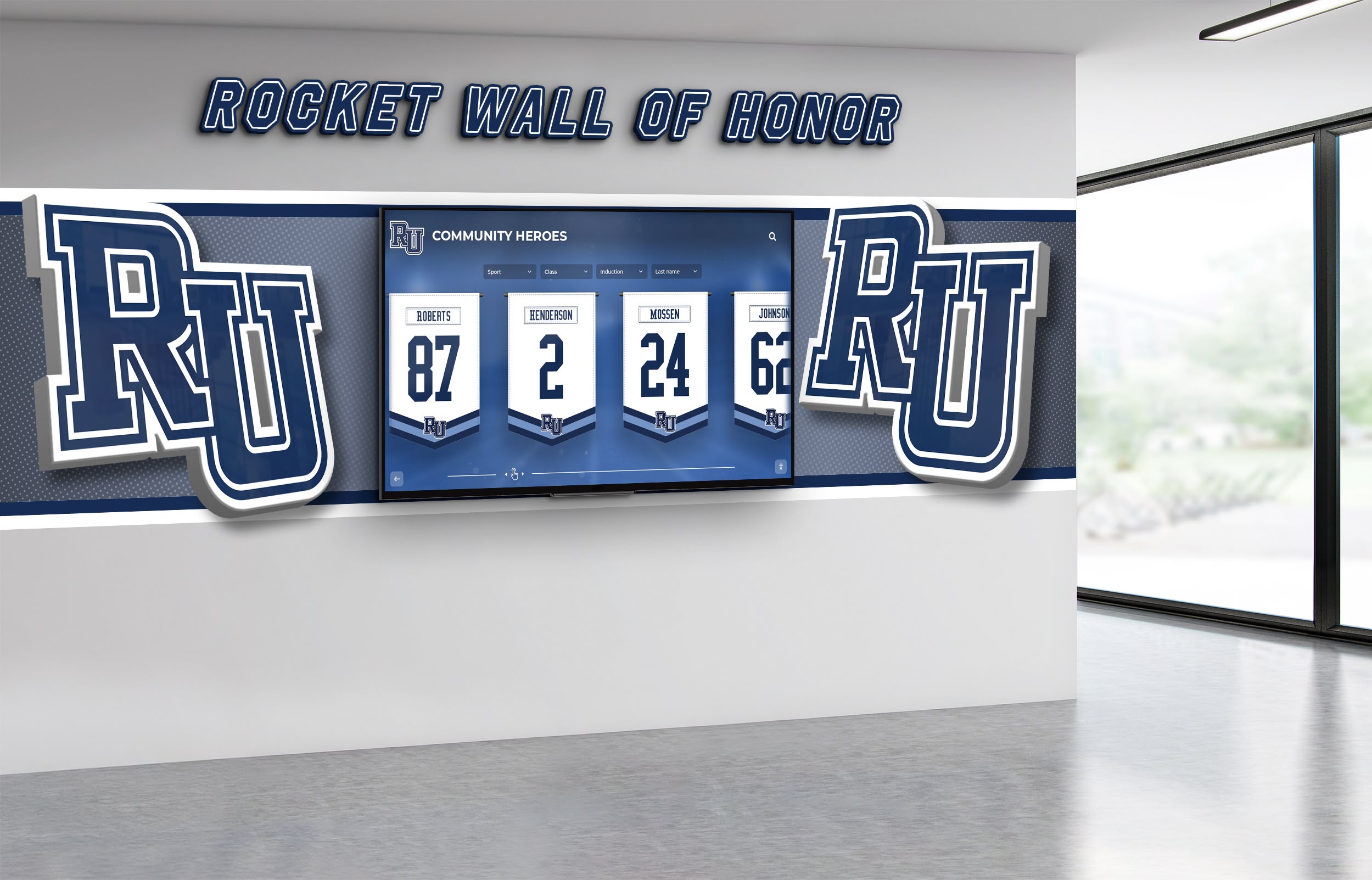
Future trends in digital walls of fame explore how technology will continue transforming how schools preserve heritage and engage communities.
Conclusion: Investing in Legacy, Building Pride
Preserving school history represents far more than nostalgia—it’s strategic investment in institutional culture, student inspiration, alumni engagement, and community pride. The difference between schools where history hides in forgotten archives versus institutions where heritage remains vibrant and accessible profoundly impacts school culture and stakeholder connections.
Digital recognition through solutions like Rocket Alumni Solutions transforms historical preservation from expensive, space-limited, static displays into dynamic, comprehensive, accessible platforms that honor past achievements while inspiring future excellence. By eliminating physical constraints, enabling rich multimedia storytelling, providing intuitive discovery tools, and ensuring global accessibility, modern recognition systems help schools preserve complete institutional narratives in ways that engage modern audiences and build authentic pride.
Schools that invest strategically in comprehensive historical recognition reap substantial returns: stronger alumni loyalty and giving, enhanced student pride and achievement motivation, improved community perception and support, preserved institutional memory, and cohesive cultures built on shared values demonstrated through whom and what institutions choose to honor.
The question isn’t whether to preserve school history—institutional heritage deserves protection regardless. The question is whether to limit preservation to traditional approaches with significant constraints, or to embrace digital solutions that make comprehensive recognition accessible, engaging, and sustainable for generations to come.
Ready to transform how your school preserves history and builds pride? Rocket Alumni Solutions provides the purpose-built platforms, professional guidance, and ongoing support that enable schools of all sizes to create recognition programs honoring their unique legacies while inspiring their communities. Discover how modern recognition solutions can help your institution celebrate its past, inspire its present, and build pride that lasts far into the future.




































